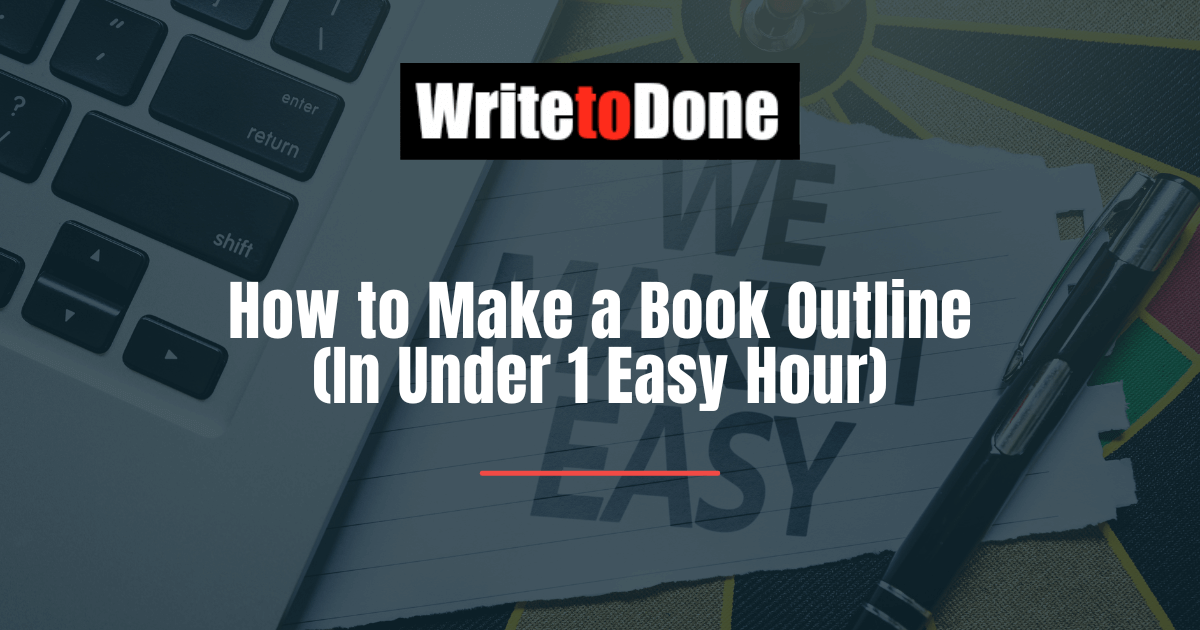Do you dream of writing a novel but just can’t think of how to make a book outline?
Maybe you even have an idea for a plot but you’re stuck and can’t find a way to move forward. It can make you feel bad and ashamed.
Read on if this rings a bell…When we have great plans and then don’t follow through, it feels like a loss. As Dustin Wax explains in The Science of Setting Goals:
Neurologically, our brains treat the failure to achieve our goal the same way as it treats the loss of a valued possession.
When we feel that loss, our motivation to reach a goal slips further and further away, right?
Luckily, there is a way forward.
How to Get Going Again When You’re Stumped
There is a simple strategy you can use when you’re stumped. Just ask yourself the following question:
“And the way forward is …?”
Let the question just hang there, without trying to figure it out.
This question has two useful functions.
- You start looking toward the future, instead of getting snagged by thoughts of the past.
- Your creative brain springs into action because the mind wants to figure out questions it can’t solve immediately.
It may take a day or two for this strategy to work, but it’s very powerful. I use it whenever I’m stumped.
Once you’ve refocused and are ready to move forward again, it’s important to think about what exactly is holding you back. I mean, apart from your doubts and fears.your story.
The question which can make you stumble and stall is this:
How to make a book outline?
Maybe you’ve got an idea for the plot and even the start of your story.
But what about developing the plot?
You may wonder: Does the storyline really hang together?
Actually, I had the same problem with a non-fiction book I wrote earlier: I just couldn’t make my mind up whether the sequence of chapters was a logical fit.
My solution for the non-fiction book was to write the chapter headings on separate pieces of paper and lay them out on the floor. Then, I walked from paper to paper to get a felt sense of whether the order was coherent.
I found that the order was wrong and was able to correct the book’s structure.
Sometimes, our body can spot inconsistencies a mile off, but our mind is blind.
How to Make a Coherent Book Outline in 3 Steps
I gleaned the first two steps from Randy Ingermanson’s celebrated Snowflake Method.
Step 1: Write a one-sentence summary of your novel
- Shorter is better. Use fewer than 15 words.
- Don’t use character names. Better to say “a detective inspector suffering from cancer” than “John Doe”.
Step 2: Expand that sentence to a full paragraph
This paragraph should describe the story setup, major disasters, and the ending of the novel. Make sure you mention the main protagonists and antagonists as well.
You’ll end up with your story in a condensed form.
And now comes the third step which I came up with when nothing else seemed to work:
Step 3: Take each main character and write a one-page synopsis of the story from their perspective.
This was the magic step that allowed me to move forward again and start to write my novel in earnest.
Why?
Because the storyline has to make sense for each of the characters. When you tell the story from the perspective of each of the main characters, you can immediately tell if there’s a weakness or an inconsistency.
I found that a couple of my protagonists were much stronger than I thought, but the main male character was more of a cardboard cutout. He was missing emotions.
A character without emotions? Yikes!
To fill out this guy’s weak storyline, I gave him some emotions to feel and suddenly his story started to come alive. I also ‘interviewed’ him, asking why he did what he did or didn’t do. This helped.
With the storyline of my four main characters fleshed out, I’m now ready to dive into the next phase of actually writing the novel.
The Wrap
“A year from now you may wish you had started today.” – Karen Lamb
The good thing is that we can stumble and stall. Even when we feel stumped and overwhelmed, we can still put words onto a page.
Here is how Annie Dillard answered a reader who asked, “Who will teach me to write?
“The page, the page, that eternal blankness…the page, which you cover woodenly, ruining it, but asserting your freedom and power to act, acknowledging that you ruin everything you touch but touching it nevertheless, because acting is better than being here in mere opacity…that page will teach you to write.”
Yes, it’s easy to give up. It’s easy to give up because we think we’re not worthy of our dreams.
It’s easy not to write because we’re not perfect and our drafts are wooden.
It’s easy to sink back into mediocrity.
But there is a way forward…
We grab hold of the sliver of courage we each possess, deep inside.
We can assert the power to act and put words on the paper, slowly, like a difficult labor and painful birth.
We can find meaning and the deep sense of joy creating something unique.
Let’s do it!
















